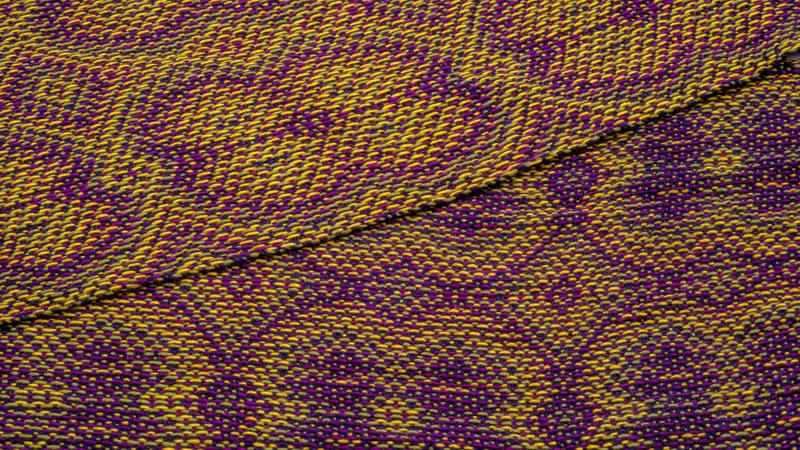The first shawls I made using the Corris effect had wavelike patterns. After these more abstract experiments, I wanted to apply the Corris effect to patterns with motifs such as flowers and stars. In my personal opinion, these motifs look best when they have a certain symmetry to them. However, when applying the Corris effect to a symmetric twill motif, the symmetry gets lost. To overcome this, I changed the rules of the Corris effect up a bit.
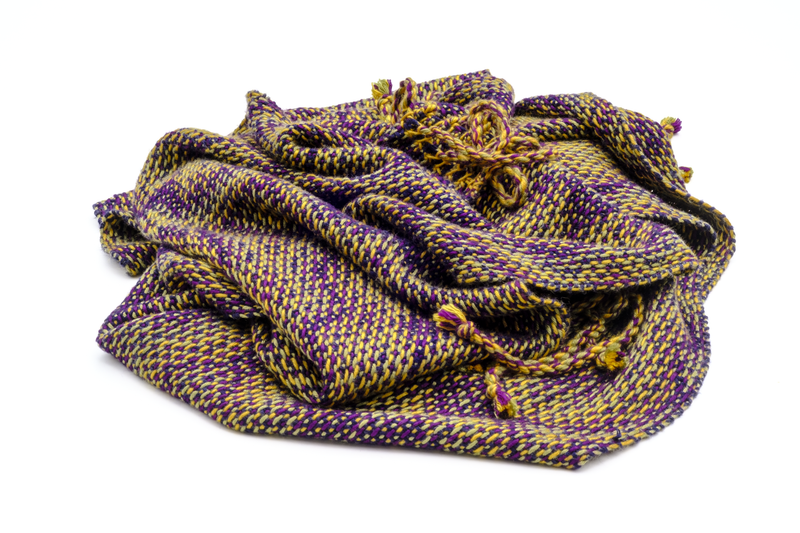
All sorts of symmetry
Patterns in advancing twill are a good basis to apply the Corris effect to. Making a symmetric motif in advancing twill is easy:
- Start with an advancing twill threading sequence.
- Mirror this threading to achieve reflectional symmetry in the warp.
- Weave as drawn in to achieve a motif that has weft-wise reflectional symmetry and 4-fold rotational symmetry.
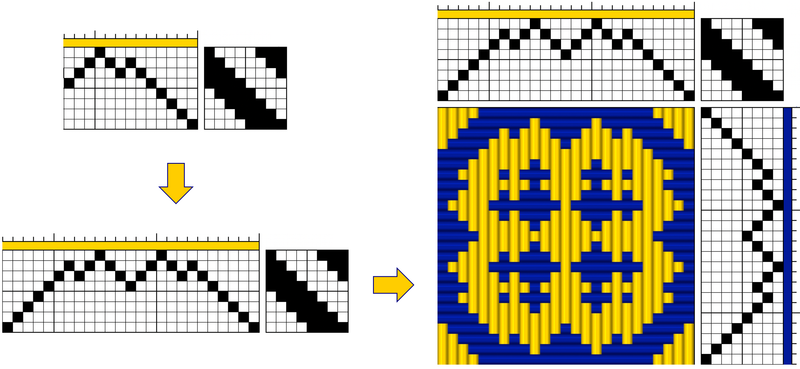
Achieving warp-wise symmetry
When applying the Corris effect to the threading of such a symmetric advancing twill motif, the warp-wise reflectional symmetry is lost. Corris entails adding two parallel threadings to the original threading. Essentially, three sets of threading are interleaved in the same order throughout the warp. So, threading A is followed by B and C and so on. There is no reflectional symmetry in a repeating sequence of A–B–C, however. I felt that this asymmetry blurred the flower-shaped motif that I planned on weaving. So, I decided to change the rules of the game a bit.
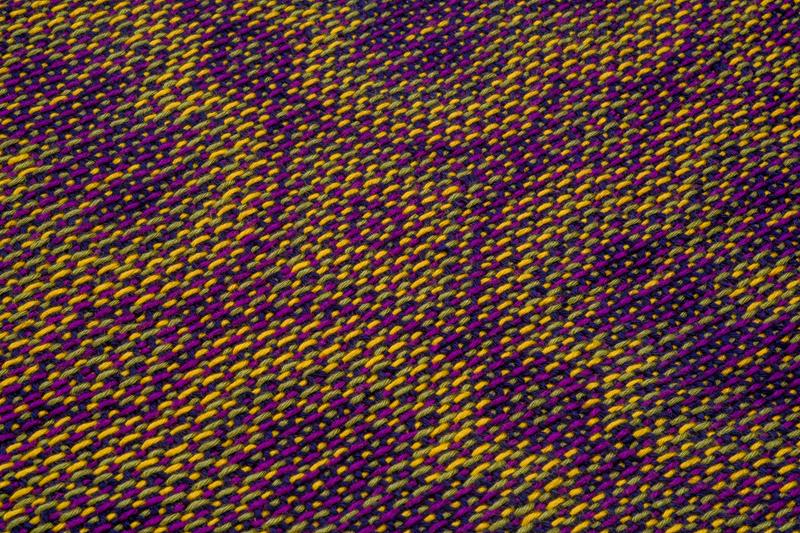
A solution was not that hard to find. Instead of first mirroring the threading sequence and then applying the Corris effect, I first applied Corris to the threading sequence and then mirrored the result. The end result has reflectional symmetry by design. So, instead of repeating the warp sequence A–B–C for the full motif, I switched it up to C–B–A at the mirror line.
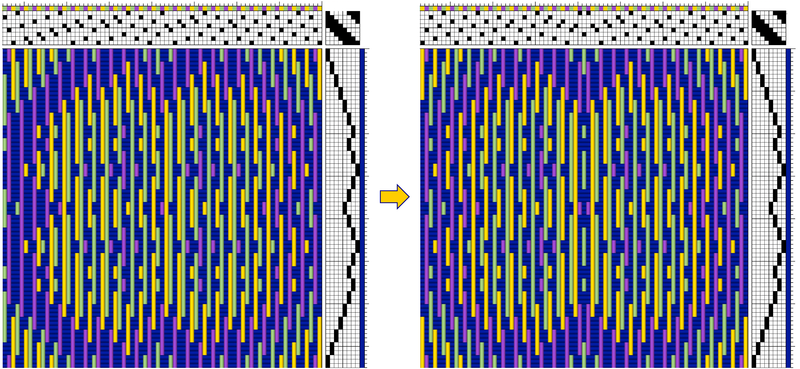
One thing to be aware of when doing this, is that the warp color order also changes. When all three warps A, B and C have their own color, applying the Corris effect as usual gives a nice and even color order A–B–C–A–B–C. In the case of my symmetrical threading sequence, the color order becomes A–B–C–B–A at the symmetry line. So, there are two threads of color B closer together than usual (1 thread apart instead of 2) and two threads of color A further away than usual (3 threads instead of 2). This is not a large difference, but can be noticeable depending on the colors in question. Playing around with different color combinations and orders in Fiberwork is a good way to see which color order works best.
Approaching rotational symmetry
Now that the threading is ready, it is time to look at the treadling. Again, starting from a symmetric advancing twill motif woven as drawn in. The Corris effect made the original threading sequence three times as long. If we want the motif to have rotational symmetry, the treadling and threading sequence need to have the same length. Here, we run into the second challenge.
A nice way to obtain a pattern without long floats, is to use a tabby in the treadling. Adding a tabby doubles the treadling sequence. So, with the symmetric advancing twill motif as starting point, we end up with a tripled threading and a doubled treadling. The motif will be elongated warp-wise. Doubling the whole treadling sequence and then applying a tabby does not do the trick either — this quadruples the treadling and leads to weft-wise elongated motifs.
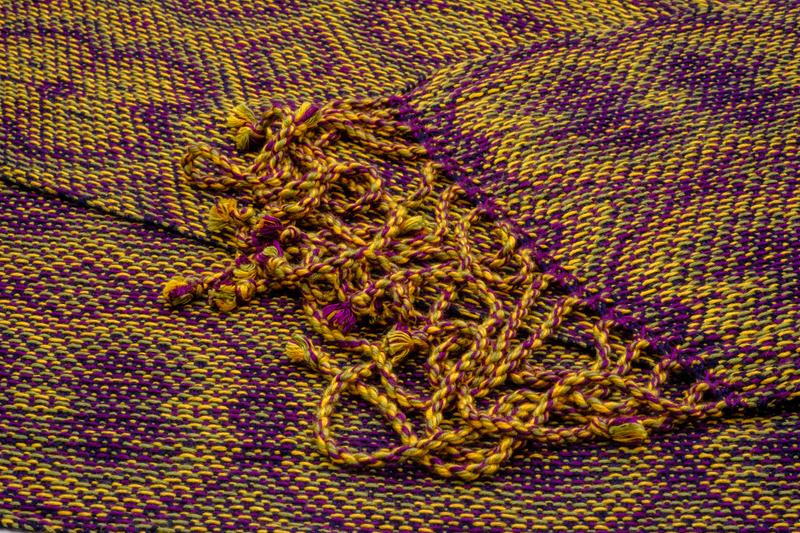
Although I did not find a way to fully overcome this problem, I did find a solution that gave me a good result for my flower motif. First, I doubled the whole treadling. Subsequently, I altered the treadling sequence manually. I removed a quarter of the threads in the treadling, trying to maintain the shape of the sequence as much as possible. This was very doable for this particular motif. I ended up with a treadling sequence 1.5 times as long as the original. So, adding the tabby resulted in a tripled treadling sequence that nicely matched the tripled threading sequence. In this way, I produced a motif that was optically very close to achieving rotational symmetry.

Achieving weft-wise reflectional symmetry
The only thing left at this point was the weft-wise reflectional symmetry that can be affected by the tabby. The resulting asymmetry is barely noticeable, but also easy to avoid. Reflectional symmetry is assured when the symmetry line is made up by a tabby pick instead of a ‘non-tabby’ pick. In this way, the alternating tabby will be symmetric.
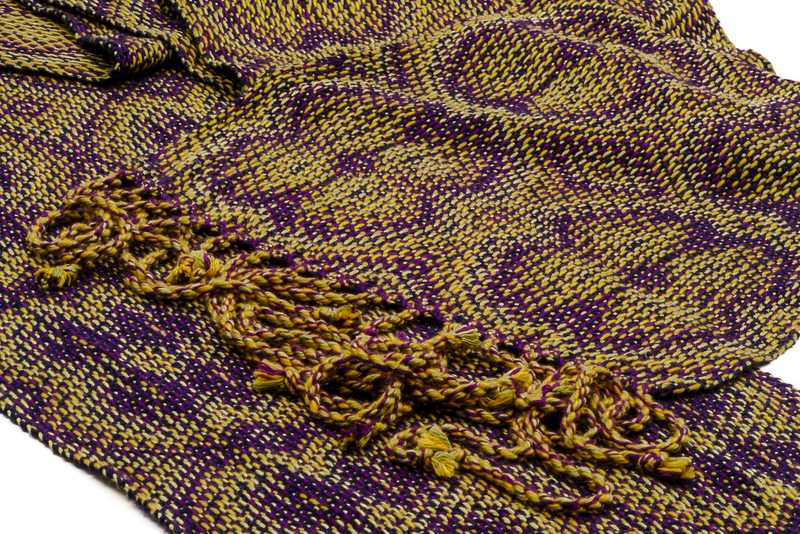
This can be achieved in a simple manner when manually removing the quarter of the threads from the treadling. This treadling sequence is doubled, so the same treadle is used for an even number of times in a row. When removing some of the threads, some treadles will be used for an odd number of times instead. This is perfectly fine, as long as the treadle around the symmetry line remains to be used for an even number of times.
Basically, the symmetry line then falls right in the middle of the treadling sequence, between two weft picks. For example, if treadle X is used around the symmetry line for 2 times, the symmetry line will fall between these two picks: X–symmetry line–X. After the tabby is added, this space is filled with a tabby pick constituting the symmetry line: tabby 1–X–tabby 2–X–tabby 1. This sequence is symmetrical. The symmetry is lost if X would be used for an odd number of times: tabby 1–X–tabby 2–X–tabby 1–X–tabby 2.
Time to weave
This puzzle was nice enough to solve, but in the end I could not wait to test my solution in practice. I chose some beautiful colors of lyocell yarn to make myself a shawl. For the warp, I picked a very rich purple — my favorite color that comes in this yarn — and paired it with green and golden yellow. A combination that is quite outside my comfort zone, but worth an experiment. I combined this warp with a dark blue weft.
The changes I made to the threading order made for a nice challenge while threading the heddles. At the symmetry line, the order of both the parallel threads and the colors is reversed. It requires some focus to keep track of this. I found that taking a short break from the threading once I reached the symmetry line really helped to ‘reset’ my brain and get ready for the reversed sequence.
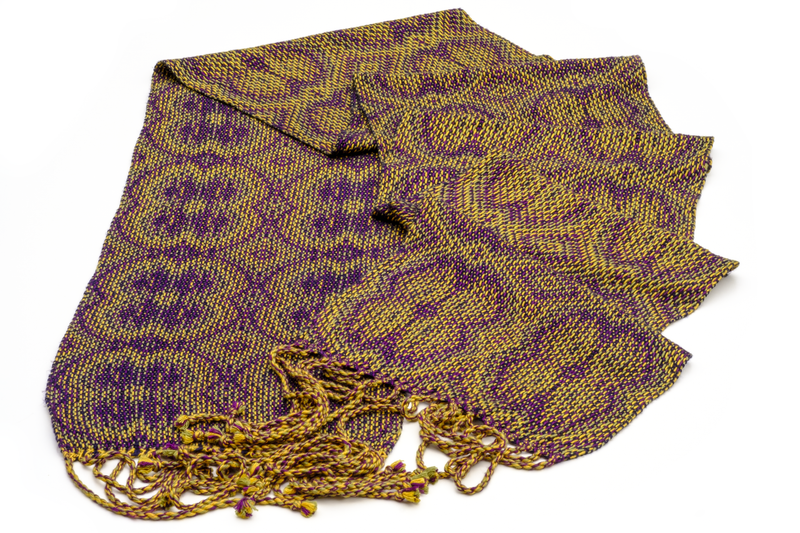
I am happy with the end result. Of course, the lyocell yarn makes for a very soft shawl. Moreover, I am pleased with the symmetry I was able to achieve by changing the Corris game up a bit. These extra efforts are not necessary when making a more abstract pattern, but I feel like they are worth the time and energy to get more concrete motifs just right.
